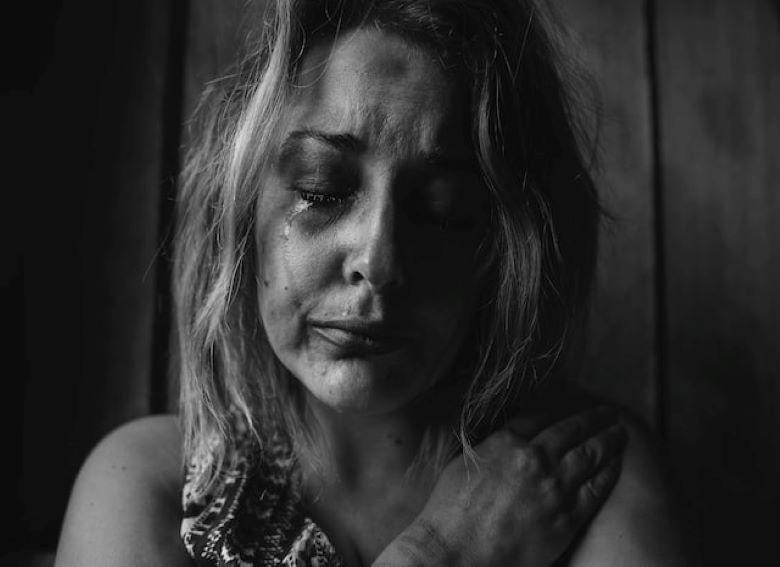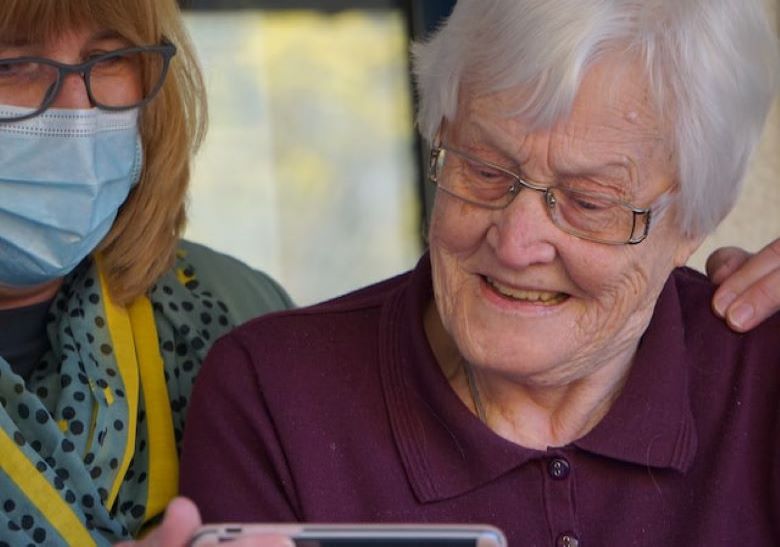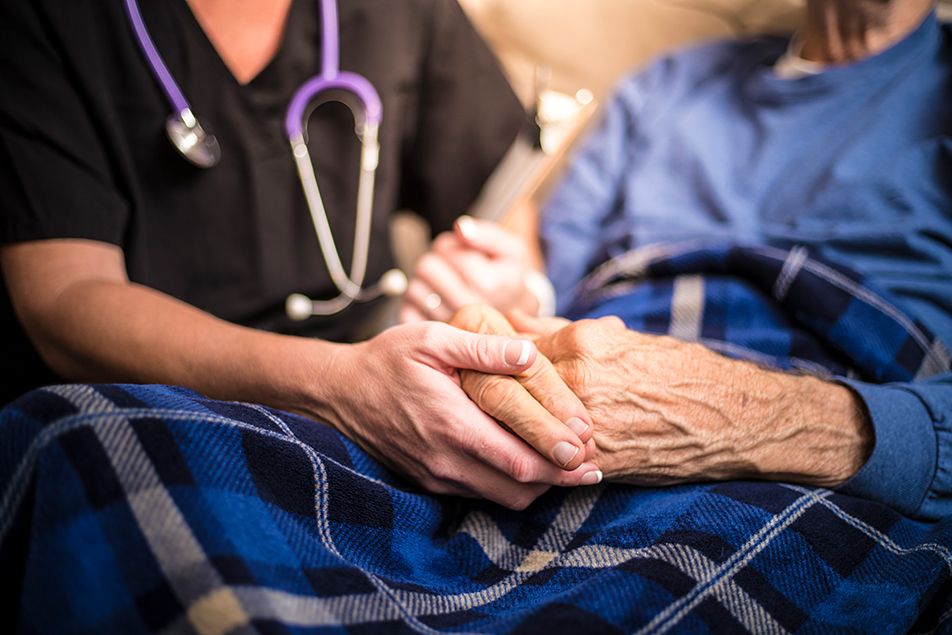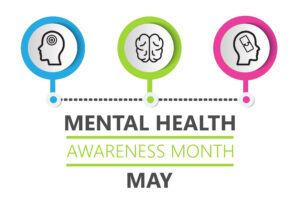November is National Hospice and Palliative Care Month
Hospice and palliative care programs across the country are reaching out to raise awareness about hospice and palliative care. Hospice is not a place but high-quality care that enables patients and families to focus on living as fully as possible despite a life-limiting illness. Palliative care brings this holistic model of care to people earlier in the course of a serious illness. Hospice and palliative care can make a profound difference and help maximize the quality of life for all those they care for.
Who Receives Hospice and Palliative Care
Every year, more than 1.58 million people living with a life-limiting illness receive care from hospice and palliative care providers in the U.S., reports the National Hospice and Palliative Care Organization. Most hospice care in the U.S. is provided in the place the patient calls home. In addition to private residences, this includes nursing homes and residential facilities. Hospice care may also be provided in freestanding hospice facilities and hospitals – allowing people to be with their families and loved ones in comfortable surroundings as life comes peacefully to a close. Research by NHPCO has found that 94 percent of families who had a loved one cared for by hospice rated the care as very good to excellent. “For more than 40 years, hospice has helped provide comfort and dignity to millions of people, allowing them to spend their final months at home, surrounded by the people important to them,” says NHPCO President and CEO Edo Banach.
What is Hospice Care?

The focus of hospice care is comfort oriented rather than curative focused. Hospice provides medical, emotional, social and spiritual support to the terminally ill and their families. The hospice team includes nurses, physicians, social workers, chaplains, grief specialists, volunteers, personal care aides, family members and other caregivers who work together in caring for your loved one. Hospice care provides pain management, symptom control, psychosocial support and spiritual care to patients and their families when a cure is not possible. Many people only consider hospice care in the final days of life but hospice is ideally suited to care for patients and family caregivers for the final months of life. One of the common sentiments shared by families who have been helped by hospice care is, “We wish we had known about hospice sooner.”
What is Palliative Care?

Palliative care is the broader philosophy under which hospice care can be found. While all hospice care is considered palliative care, not all palliative care qualifies as hospice care. Within a hospital setting, these two practices look quite different.
Palliative care does not serve only the dying; instead, it focuses more broadly on improving life and providing life and comfort to people of all ages with serious illnesses. Palliative care brings the same interdisciplinary team approach as hospice, but lends assistance to people earlier in the course of a serious illness. It is appropriate at any age and at any stage in a serious illness and can be provided along with curative treatment.
The idea behind an interdisciplinary team is that the collaboration of healthcare workers will result in better care for the patient and their family. An interdisciplinary team is the key to success in palliative care because this type of care incorporates many factors and areas of expertise to ensure the patient centered approach. Palliative care interdisciplinary teams may include professionals involved not only in surgical interventions, radiation therapy, and symptom management, but also physiotherapy, occupational therapy, speech language pathology, social work, and recreational therapy, among others.

Palliative and hospice care have the objective of providing pain and symptom relief, but that is not all they have in common. There are some similarities and differences between palliative care and hospice care, to explore. After all, these are two different types of care and you may need to choose between them.
The field of hospice and palliative medicine present unique challenges and opportunities for clinicians and patients alike. From facilitating difficult conversations to managing grief and emotional distress to the specific degree of determining what is right for any given patient, the list goes on.
Hospice and palliative care should not be about waiting to die. Rather, it is about extending and making the most of your time. The sooner patients, families, and other healthcare professionals can understand this, the sooner their quality of life can improve.
With so many challenges in hospice and palliative care, there are a few compelling ones that stand out. Through understanding and overcoming these challenges, patients, their loved ones, and clinicians can pave way to better care with less challenges in the future.
Lack of Adequate Training
The care of the dying patient must be considered within the context of the psychological, physical, and social experiences of a person’s life. Foremost among those who require end-of-life care are the elderly, who are prone to loneliness, who frequently underreport pain, and who have a greater sensitivity to drugs and drug interactions. Unfortunately, clinicians who are responsible for the treatment of patients at the end of life commonly lack adequate training to help guide end-of-life decisions and to deliver bad news to patients and families. They must also face their own discomfort with discussions about death and deal with poor compensation for the time spent discussing end-of-life care with patients and families.
Several studies show that many terminally ill patients are inadequately treated for relief of pain. This may be due to limited formal education on pain management, and a profound focus on diagnosis and treatment of underlying conditions rather than on patients’ suffering.
Given the unique process of each person’s death, high-level strategies are often inadequate to guide patients, their families, and the clinicians who care for them through this complex and emotionally challenging process. In some cases, nurses fresh out of school not only lacked technical skills, but also the emotional resilience necessary to care for the dying on a daily basis, according to Silverstone Hospice CEO, Alfonso Montiel.
The problem is multi-faceted. Not only do providers need clinicians to do the work, but barriers exist on the referral side as well. Many physicians hesitate to refer patients to hospice or palliative care because they do not fully understand the nature of those services or their benefits. Many also lack the skills necessary to conduct goals-of-care conversations with patients and families. Educating physicians in other settings on these benefits remains a crucial area of improvement, he explained.
Key Medical Issue Related to End-of-Life Care

Pain is one of the most common symptoms dealt with by hospice and palliative care providers. Pain, and the fear of pain, often drives the behavior of patients at the end of life. In a survey of 310 patients with life-limiting illness, “freedom from pain” ranked most important in their considerations of the end-of-life process. Pain, especially cancer-related pain, is common; moreover, it is experienced by 50% to 90% of patients with advanced disease. Fortunately, over 90% of those with cancer-related pain respond to basic analgesic measures; however, many patients fear that their suffering will progress unabated. Although there is no evidence that the perception of pain is altered by advancing age, the elderly are often unwilling to report their pain because they believe it is a normal symptom of aging and that their pain is directly associated with the worsening of their illness.
Like other pain grading scales, the Likert Pain Scale have been used to help standardize care and provide objective assessment tools that are not provider-dependent. Ranging from zero to ten, with zero being “no pain” and ten representing an excruciating pain such as childbirth, this scale may provide superior assessment in children with reliability and validation, and its implementation in adults allows for the evaluation of pain in patients who may be unable to communicate verbally but many providers believe that certain conditions can mimic pain at the end of life making this scale somewhat misleading. The number on the scale that represents an unbearable pain may differ significantly from patient to patient.
Physicians often are reluctant to prescribe adequate medication to relive pain resulting in providers continued use of pain scales in the palliative care model. Apart from the medical team caring for the patient, a multidimensional perspective viewed from a highly personal experience unique to the patient approach to pain management is key to improving outcomes – could be a sign of emotional or spiritual distress.
Total pain concept, developed by Dame Saunders, recognizes that a patient’s suffering is due not only to physical pain but also to spiritual, psychological, and social distress.
Communication: Why it is Important to Say the Right Word

It is important for the patient, families and the health care provider to discuss the wishes for end-of-life care. Building the relationship and trust through open communication will help the patient and families feel that their beliefs are respected and that the hospice and palliative care team is doing their best to respect the wishes and allow the patient to die with dignity.
Since health care providers must be aware of how they are speaking to their patient(s) and their families it is important for health care providers to not use code or vague words while speaking. Vagueness must be avoided, and instead the matter must be disclosed in a manner which helps both the patient and family understand the situation. Generally speaking, it is difficult to honor patient’s wishes concerning end-of-life care for reasons such as denial of death or the fear of death, thereby, making discussions on end-of-life care awkward for patients and professionals alike. In order to prevent uncertainty and promote understanding, medical educators have begun focusing on such key communication skills as conducting family conferences involving the patient’s family and the interdisciplinary team interact in person, face-to-face. Unfortunately, for many patients and families these discussions may not occur until the dying process is underway.
What is the “Dying” Process?

The dying process is an extremely personal matter and in “end-of-life situations” patients’ conditions can change rapidly during the dying process, and all members must be aware of what is going on with the patient. Patients and family members may not be able to make right choices and participate in decision-making unless they are well informed and knowledgeable about the illness. It is the physician’s duty to inform and empower them to make appropriate final decisions. The challenge for most physicians is to inform the patient and/or relatives regarding impending death without making them develop feelings of hopelessness or of being abandoned. The patient’s view of good death can be very different from the physician’s perspective.
Economic Issues in End-of-Life Care
Hospice programs offer a widely recognized form of palliative care in the US. Hospice refers to a specific government-regulated form of end-of-life care under different government and private healthcare schemes. Hospice care is typically given at home or a nursing home by an interdisciplinary team that includes a physician, nurse, social worker, chaplain, volunteers, bereavement coordinator, and home health aides, who collaborate with the primary care physician, patient and family. Bereavement services are offered to the family for a year after the death.
Conditions of Participation for Hospice and Palliative Care
Hospice regulations in the US require that a patient agree to forgo measures with curative intent and to focus on comfort. Also, to be eligible for a Medicare-certified hospice program, the primary physician must certify that the patient is likely to die within six months if the illness runs its usual course. Once enrolled in hospice, a physician or hospice nurse practitioner must have at least 1 face-to-face visit with the patient in each of the first two 90-day periods, which certifies that the patient continues to meet the prognostic criteria. Patients surviving longer than 6 months require recertification once every 60 days, also accomplished through a face-to-face visit.
Occasionally, patients recover unexpectedly and no longer qualify for hospice. Such patients, often dubbed “hospice graduates,” disenroll from hospice and resume their prior medical care. Patients often qualify for hospice before actually being referred. This is partially because physicians notoriously overestimate prognosis, but is also related to readiness of patients and their families to accept hospice.

Currently, most hospice patients have their costs covered by Medicare Part A through the Medicare Hospice Benefit. The Medicare Hospice Benefit affords patients four levels of care to meet their clinical needs: Routine Home Care, General Inpatient Care, Continuous Home Care, and Inpatient Respite Care. Payment for each covers all aspects of the patient’s care related to the terminal illness, including all services delivered by the interdisciplinary team, medication, medical equipment and supplies.
According to the Centers for Medicare and Medicaid Services (CMS), Medicare pays for 84% of hospice care and the remainder is paid by private insurance, Medicaid or charity care. Also, 40% of all Medicare costs occur in the last month of life (CMS, 2018). The National Hospice and Palliative Care Organization (NHPCO) 2020 report states that “1.55 million Medicare beneficiaries, a 4% increase from prior year, were enrolled in hospice care for one day or more in 2018.”
Medicare, Medicaid, many insurers, and healthcare plans will cover the medical portions—physician and nurse services—of palliative care. Veterans may be eligible for palliative care through the Department of Veterans Affairs. Check with your doctor and healthcare plan to see what insurance will cover in your particular situation. Unlike the comprehensive hospice benefit, there is no comprehensive palliative care benefit.
Ethical Issues in Hospice and Palliative Care
Providers are obligated to provide ethical healthcare by offering good quality healthcare and doing what is right for the patient. Ethics play an increasingly important role as the options for end-of-life care multiply.

Patients often are not able to communicate their wishes as they enter the dying process. If previously they did not clearly communicate their wishes in an advance directive, it can be particularly difficult for their loved ones to make decisions on their behalf.
Ethical Dilemmas Unique to Hospice and Palliative Care
- Physician-assisted death
- Physician-assisted suicide
- Palliative sedation
In physician-assisted suicide, the patient is responsible for deciding if and when the medication is used and for administering it, sometimes, himself or herself. In physician-assisted euthanasia, the physician administers the medication.
Palliative sedation can be provided in the patient’s last few days of life for severe physical symptoms that do not respond to the typical doses of medication. It is usually recommended when all other options for treating a patient’s suffering have been exhausted.
Sedating medications are administered to keep a patient in a state of unconsciousness while other symptom control medications are continued. The Principles of Double Effect by Thomas Aquinas, acknowledges that the primary goal of palliative sedation is to alleviate suffering and not to hasten death. The practice of euthanasia is legalized in some countries (The Netherlands, Belgium, some states of USA and Australia). However, euthanasia poses an ethical dilemma in palliative care. Simply said, ‘a doctor or nurse is not trained to deliberately end a patient’s life’. It is interesting to note that the spread of palliative care, use of analgesics, and effective prescription of terminal sedation(even in the face of double effect) have reduced the need for euthanasia.
The Influence of Religion and Cultural Systems During the Final Stages of Life

Perhaps no other field in medicine is more uniquely suited to address a patient’s spiritual needs than hospice and palliative medicine. Each religion has beliefs, rites, and rituals that are performed during a patient’s dying process or upon his or her death. Spirituality can serve as an important means of coping for patients and their loved ones as they experience the dying process.
It is important for health care providers to be aware that there is great variation within cultures. Some cultures and religions view talks about death as taboo and others view the act of suffering as something that individuals must endure and that only God will determine when and how an individual should die. This will have an impact on whether or not the patients and their families will accept life-sustaining therapies or if spiritual care will be crucial for the patient and their family.
Spiritual care involves religious leaders from different religions (e.g., priest, rabbi, etc.) who can especially help an orthodox family make the final decision regarding end-of-life care for the patient. For example, for those who are Muslim, a religious leader may be a more appropriate person to talk to about a patient’s end-of-life care. For example, Saudi Arabia’s whose legal system is based on Shari’a, the system of Islamic law prohibits suicide, assisted-suicide and euthanasia. Do-not-resuscitates (DNRs) are only allowed under certain circumstances, and in general, advance directives are not accepted in Islamic law, for they believe that only Allah can make choices regarding one’s life. This may create a problem for the migrant population in choosing to live in some secular societies such as the U.S, where the patient or the treating staffs’ expectations differ from the religious beliefs. In situations such as this where conflicts arise, social workers who are part of the interdisciplinary team, may act as mediators in arranging family meetings including religious leaders to ensure that conflict resolution is achieved.
From one society to another, families usually follow the orders of the priest who will help both the patient and the family, in the last days of the patient’s life, feel that they had done everything that they could, to have the patient ‘at peace in heaven’. Moreover, a religious leader who decides to take part in end-of-life care discussion along with the patient and family will allow for a more open conversation. By having such conversations, a religious leader within the interdisciplinary palliative care team may also help with caregiver stress management.
Having open conversations is essential for the palliative care team, so that they are able to provide care that is accepted by both the patient and the family. Therefore, health care providers must be open minded to the fact that their perspectives on various advanced care directives may be different from the patients and their families. Being open minded will allow both the health care providers, the patient and his/her family to communicate effectively.
Hospice and Palliative Care During the Pandemic

The experience of grief and the need to heal unites humans worldwide. With more than six million deaths worldwide and over one million people dead in the U.S. during the COVID-19 pandemic resulting in tremendous strain on healthcare systems and unprecedented grief and suffering for health workers and caregivers. In addition, several conflicts and wars are taking place around the globe, resulting in millions of families and caregivers grieving the deaths of family and friends, experiencing social isolation and property destruction.
Over the past two decades, the United States has seen tremendous growth in palliative care capabilities. As hospice care became a more mainstream part of care delivery, payers, providers and policymakers began to realize the potential benefits of palliative care for patients with serious illness at any stage—namely improved quality of life and reduced costs. With millions at risk for serious illness with limited treatments, palliative care is increasingly in demand.
People who are elderly, frail, and/or have underlying chronic or serious illness—palliative care’s main patient population—are at highest risk of serious illness if they contract the coronavirus. The core principles of palliative care—managing pain and symptoms, coordinating care, encouraging advance care planning, and supporting family and caregiver needs—are critical touchstones for health professionals on the frontlines of the pandemic.









